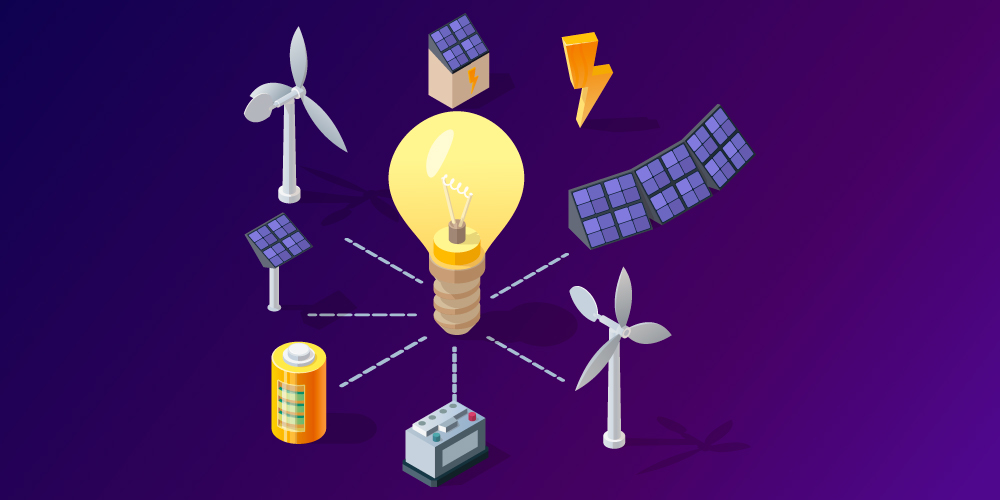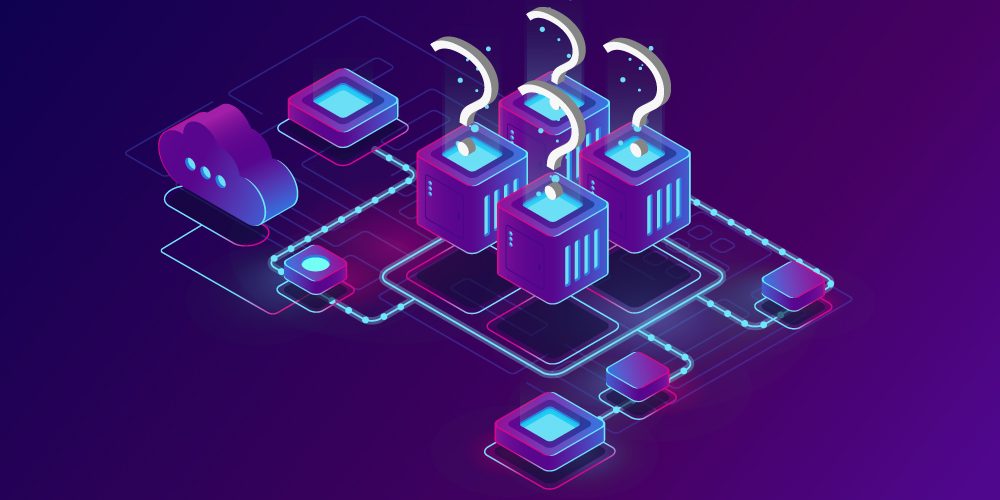Let’s consider the possibility of using blockchain in the electricity sector. Let’s analyze the features of the electricity power market, its existing problems and the possibility of solving them using blockchain technology.
Prospects of application
Not so long ago, blockchain technology was used exclusively when working with cryptocurrencies, but now this system is becoming more widespread in other areas of the economy. In some countries, blockchain has affected the direction of the electric power industry, where it now helps to solve the most pressing issues.
The practical application of the blockchain

At the moment, there are a small number of situations
where you can track the effectiveness of using blockchain technology.
Initially, the system was designed to work with cryptocurrency, which at some
point began to grow at a high rate (the total capitalization in 2017 was about
$ 200 billion). However, then a sharp decline in the exchange rate began, and
the wave of popularity of mining gradually faded away. The technologies that
were used in this system remained, and now they are trying to adapt them for
other industries. The system of smart contacts is being developed, their audit,
as well as related technological solutions and equipment that were included in
the cryptocurrency earning system have been further developed.
Developers strive to adapt the distributed registry system to specific areas of
the economy that are United by a common feature. Such an area should include
several components with limited roles: seller and buyer, supplier and consumer.
The number of such areas is unlimited. Blockchain technology allows you to take
advantage of the following advantages:
- Increasing the level of trust between participants in the same system;
- Free entry;
- Eliminating the problem of growth – now the business can expand without restrictions.
The blockchain system allows you to expand the scope of traditional business, as well as establish a trusting contact between two participants.
Electric power industry – characteristics of the industry and its features
The main difference between the electricity market is that the product is presented in a specific form. Electricity cannot be stored like any other product in the enterprise. At the moment, manufacturers are trying to solve this problem on their own by creating hydro-accumulating power plants, but all enterprises that are currently designed using this technology are working at a loss to themselves. The market does not support the development of this system.
This situation offers all market participants the only solution – it is necessary to consume exactly as much energy as is produced at enterprises. That is why it is necessary to accurately calculate the amount of energy that can be generated and consumed over a specific period. If you represent this system with a formula, the result is:
Produced by t = Consumed t + DELTA t, where the variable t is the time for which this calculation of production and consumption is made. The main task of the enterprise, based on this formula, is to bring the Delta value to zero.
To make sure with an example, you need to refer to the report of the Trading system Administrator, which provides data on the level of energy consumption and production in Russia. The ratio of demand to supply fluctuates around 86-94% (data from the European part of Russia and the Siberian district are taken into account here). Thus, the total loss of electricity can be about 6-14%. The absolute figures for this period were also calculated – they amounted to about 14 billion kWh.
Mechanisms that solve the electricity issue
Since each company tries to minimize production losses, the following mechanisms are currently used:
- Development of the capacity trade sector in parallel with the electricity market. This system allows consumers to be sure that electricity at home will always be available in the public domain.
- Search for new optimal ways to plan energy consumption. Another idea among manufacturers was an information system where each user of electricity should enter information about the limit that they need for a certain period. In practice, such a system has not become widespread, since it is very difficult for an ordinary person to plan energy consumption.
- Introduction of fines for exceeding the norm of electricity consumption. This method has also not gained popularity among manufacturers and consumers, since most of them just seem unfair.
Problems with the existing system
The ideal option would be to automate this process, but this is not yet possible in the modern market. The human factor plays an important role, so it is impossible to optimize and reduce the planning and scaling process.
That is why the number of participants in the EPM is strictly limited – the system where applications are processed also has its own limits. It is easier to create a database for 1000 people and maintain it in the future than to process mass requests from all electricity consumers. There are also drawbacks in planning consumption for smaller periods – they can lead to additional losses. Another problem is the difficulty in introducing small players and small businesses that provide non-permanent energy sources (such as wind farms and solar panels).
The solution to the problem using the blockchain

To cope with all the problems described, you need to use a blockchain system that will allow you to:
- Set up a plan for electricity consumption at the smallest level (this will allow small participants with small resources to enter the market). Due to this, it is possible to achieve a reduction in electricity prices for consumers. In this case, the company does not have to put additional volume in the plan, and smaller players will also have access to the market.
- The planning cycle itself will be significantly reduced, which means that the risk of errors in planning and further forecasting will be reduced. This way, companies will be able to avoid fines and there will be no need for additional insurance.
- The level of trust between the participants in the process will increase. All consumers and the system itself will be able to periodically check the transaction. At the same time, the information base will be absolutely transparent for all participants.
How the blockchain system works in the electric power industry

At the moment the electricity power sector is being gradually established projects on introduction of system of the blockchain. The following system features are currently being actively developed:
- Decentralization of electricity transactions-technology can simplify the existing energy supply system, which consists of several levels. With the help of blockchain, producers and consumers interact directly without additional intermediaries. This reduces the cost of electricity. Smart contacts initiate a transaction, and the system works according to certain rules.
- Ownership registration – a chain of information blocks that make up the blockchain can be used for documenting ownership rights. In this case, the system uses two applications: the first allows you to verify electricity production and quotas, and the second allows you to create a register that controls information about property rights.
- Development of small businesses by launching the blockchain. At the moment, several small businesses in various countries have already built their organizations on the blockchain system. A Prime example was Conjoule, which took the first step in connecting consumers and photovoltaic systems through its blockchain technology. The pilot launch is currently being tested in the cities of Essen and muehlheim. The advantages of such a system were the ability to purchase excess electricity from solar power plants, as well as “home” resources by private and public companies. With the help of the system, the company wants to achieve transparent pricing for energy resources, the possibility of concluding contracts between consumers, as well as creating a consciousness of the “value” of electricity.
The blockchain system will be able to ensure that all these conditions are met. Its advantages and features can be effectively applied to solve these problems. It will increase consumer confidence in the system, perform small transactions, and open up opportunities for scaling production. At the moment, there are already concrete examples of using this technology in practice.
For example, the company TenneT first announced the use of blockchain technology three years ago, but everything is still in the testing stage. Another developer of the Power Ledger blockchain platform has also adapted the system to work in the energy sector. Now there are about 10 projects in operation.
The Electron platform has also gained popularity in the European market, which at the test stage was able to load about 53 million points for registering electricity consumption and production. The system also allows you to plan and distribute energy evenly between participants. There are achievements in this area in Russia. The generations blockchain platform is being developed on the basis of the Ural Federal University, which also aims to reduce energy costs. It automatically collects data on consumption and production, and then performs planning.
Thus, the system proves its effectiveness in the field of electric power and, perhaps, in the future, it will be able to solve the problems of planning and consumption of electricity everywhere.


